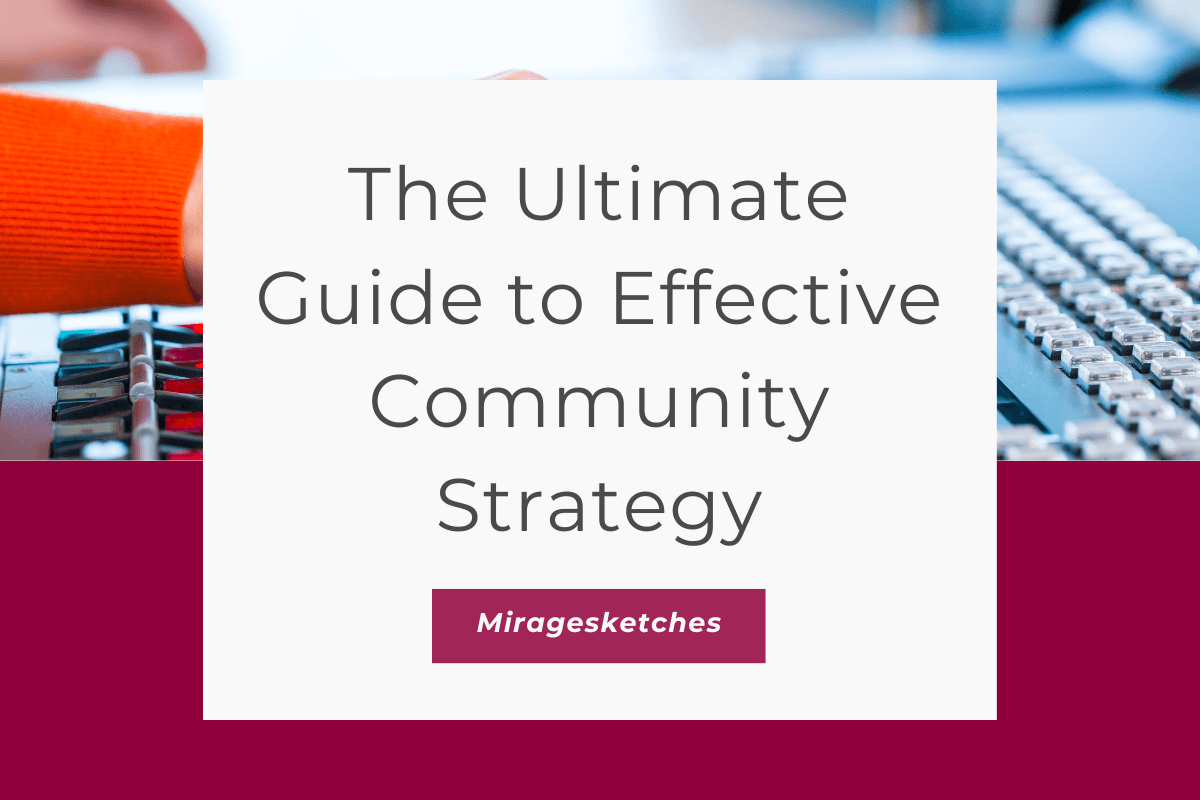Introduction
Community strategy has become an indispensable tool for organizations, businesses, and individuals alike.
But what exactly is a community strategy, and why is it so crucial?
In this comprehensive guide, we will be exploring community strategy meaning, objectives and components.
What is the Meaning of Community Strategy?
A community strategy is essentially a well-thought-out plan that outlines how an entity, whether it’s a business or a non-profit organization, intends to engage and interact with its community.
This strategy serves as a roadmap, guiding actions and decisions aimed at fostering trust and mutual benefit within the community.
In essence, it’s about building and nurturing relationships, both online and offline.
The Five Objectives of Community Strategy
1. Community Growth: One of the primary objectives of a community strategy is to foster growth.
This growth can be in terms of the number of members, the diversity of the community, or the engagement levels within it.
A well-executed strategy should aim to attract new members while retaining existing ones.
2. Member Engagement: Engagement is the lifeblood of any community.
A community strategy should focus on creating opportunities for meaningful interactions, discussions, and contributions from its members.
Engaged members are more likely to become advocates and ambassadors for the community.
3. Trust and Reputation Building: Trust is the foundation of any thriving community.
A solid community strategy should outline how the community plans to build trust among its members and establish a positive reputation in its niche or industry.
4. Value Creation: Communities thrive when they offer real value to their members.
Whether it’s through educational content, networking opportunities, or exclusive perks, a community strategy should prioritize value creation as a critical objective.
5. Sustainability: A thriving community stands the test of time.
A community strategy should include plans for long-term sustainability, outlining how the community will adapt to changing trends, technologies, and member needs.
Components of Community Strategy
1. Clear Goals and Objectives: The strategy should start by defining clear, measurable goals and objectives that align with the community’s mission and vision.
2. Audience Analysis: Understanding your community members is essential.
This component involves researching and profiling your target audience to tailor your strategy accordingly.
3. Content Strategy: Content is a powerful tool for community engagement.
Your strategy should outline the types of content you’ll create and share, as well as the platforms you’ll use.
4. Communication Plan: Effective communication is vital to community success.
This component details how you will communicate with your members, including the frequency and channels you’ll use.
5. Member Onboarding and Engagement Plans: How will you welcome new members and keep them engaged?
This part of the strategy focuses on the member journey within the community.
6. Metrics and Analytics: To measure the success of your strategy, it’s crucial to define the key performance indicators (KPIs) you’ll track and the tools you’ll use for analytics.
Why Do You Need a Community Strategy?
1. Focus and Direction: A community strategy provides a clear roadmap for your community’s growth and development. It ensures that your efforts are purposeful and aligned with your goals.
2. Efficiency and Effectiveness: With a well-defined strategy, you can avoid aimless actions and instead concentrate your resources where they will have the most significant impact.
3. Member Satisfaction: Communities with a strategy in place tend to have more satisfied members.
When members see that their needs are being addressed and their feedback is valued, they are more likely to stay engaged.
4. Measurable Results: A community strategy allows you to track your progress and measure your success.
You can see what’s working and what needs improvement, enabling you to iterate and grow.
5. Competitive Advantage: In a crowded digital landscape, having a well-executed community strategy can set you apart from competitors.
It can be a unique selling point for your brand or organization.
Implementing Your Community Strategy
1. Define Your Community’s Purpose: The foundation of your strategy lies in clearly defining the purpose and mission of your community.
What value will it provide to members?
What problems will it solve?
Having a crystal-clear purpose will guide all your subsequent actions.
2. Identify Your Target Audience: Conduct thorough research to understand your target audience.
Who are they?
What are their needs, interests, and pain points?
The more you know about your audience, the better you can tailor your strategy to meet their expectations.
3. Set Measurable Goals: Your objectives should be specific, measurable, achievable, relevant, and time-bound (SMART).
For example, if one of your goals is to increase member engagement, you could set a measurable target, such as a 20% increase in weekly discussions within six months.
4. Choose the Right Platforms: Determine where your community will thrive best.
Will it be a social media group, a dedicated forum, or a combination of platforms?
Select platforms that align with your audience’s preferences and behavior.
5. Content Creation and Sharing: Develop a content strategy that resonates with your audience.
Create valuable and relevant content that addresses their needs and interests.
Consistency is vital, so establish a content calendar to ensure a regular flow of content.
6. Engagement and Moderation: Encourage member participation through discussions, polls, contests, and events.
Assign moderation roles to maintain a positive and respectful atmosphere within the community.
Address conflicts promptly and fairly.
7. Onboarding and Welcoming: Create a welcoming process for new members.
This could involve a welcome message, an orientation guide, or a mentorship program.
The goal is to make newcomers feel valued and included from day one.
8. Feedback Loop: Actively seek feedback from your community members.
Conduct surveys, polls, or open discussions to gather their input.
Use this feedback to make improvements and refine your strategy over time.
9. Analytics and Measurement: Continuously monitor your KPIs and analyze the data.
Tools like Google Analytics, social media insights, and community management platforms can provide valuable insights into member behavior and engagement levels.
10. Iterate and Evolve: A community strategy is not static; it should evolve with your community’s changing needs and goals.
Regularly review and update your strategy to stay relevant and practical.
Conclusion
A well-crafted community strategy is not a mere accessory but a fundamental driver of success in today’s interconnected world.
By using the above strategies, you can get a good result in your community strategy.
Remember, community strategy is an ongoing process that requires adaptability and continuous improvement.
Start your journey towards a thriving community strategy today!





